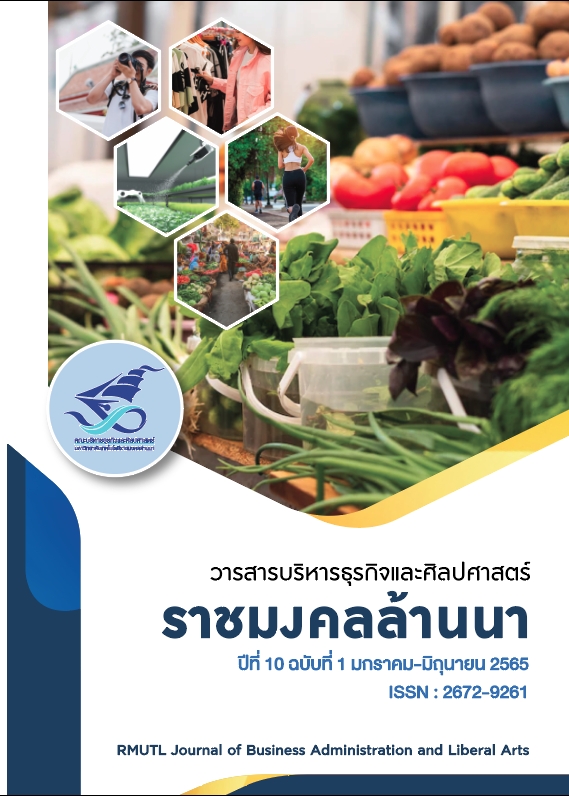Consumption Behavior of Canned Food in Iran
Main Article Content
Abstract
The objective of this research is to study food consumption behavior, marketing mix factors, and personal characteristics factors related to canned food consumption behavior in Iran. It was conducted by surveying canned food consumers in the city of Qom, Kerman, Tehran, Mashhad, and other Iranian cities using a questionnaire in 2019. 150 samples were collected and analyzed by using statistics, frequency, percentage, mean, standard deviation, and hypothesis testing using Chi-square test.
The results of the study found that personal characteristics of sex, age, marital status, educational qualifications, occupation, monthly income and number of family members were associated with canned food consumption behavior in Iran, while the area of residence was not. For the marketing mix factors which affect the consumption behavior of canned food in Iran, it was found that the subjects gave precedence to good taste, nutritive value, convenience in consumption, and time-saving. At the same time, the canned food must be reasonably priced, easy to find, and offer a variety of sizes, prices, and selling channels. Also, the promotional factors that affected the buying decision were the availability of food tastings, discounts, and giveaways.
Article Details

This work is licensed under a Creative Commons Attribution-NonCommercial-NoDerivatives 4.0 International License.
บทความวิจัยนี้เป็นของลิขสิทธิ์
References
สำนักงานปลัดกระทรวงพาณิชย์, ศูนย์เทคโนโลยีสารสนเทศและการสื่อสาร. (2563). สินค้าส่งออกสำคัญของไทยรายประเทศ. ค้นเมื่อ 20 กุมภาพันธ์ 2563, จาก http://tradereport.moc.go.th/Report/Default.aspx?Report=MenucomTopNCountry&Option=1&Lang=Th&ImExType=1
ศิริวรรณ เสรีรัตน์, ศุภร เสรีรัตน์, ปริญ ลักษิตานนท์, องอาจ ปทะวานิช, ปณิศา มีจินดา, จิระวัฒน์ อนุวิชชานนท์, และอรทัย เลิศวรรณวิทย์. (2552). การบริหารการตลาดยุคใหม่. กรุงเทพฯ: ธรรมสาร.
อารีรัตน์ เกษมวุฒิ. (2559). การศึกษาพฤติกรรม วิถีการดำเนินชีวิต และปัจจัยทางการตลาดที่มีผลต่อการซื้อผลิตภัณฑ์อาหารฮาลาลประเภทปลากระป๋องของชาวอินโดนีเซีย. ใน นีรนุช ภาชนะทิพย์ (บรรณาธิการ), การประชุมทางวิชาการของมหาวิทยาลัยเกษตรศาสตร์ ครั้งที่ 54: สาขาวิทยาศาสตร์, สาขาพันธุวิศวกรรม, สาขาสถาปัตยกรรมศาสตร์และวิศวกรรมศาสตร์, สาขาอุตสาหกรรมเกษตร, สาขาทรัพยากรธรรมชาติและสิ่งแวดล้อม (หน้า 713-720). นนทบุรี: โรงพิมพ์วัชรินทร์ พี.พี.
Aghaeia, S. & Naeinia, A. (2018). Consumer attitudes toward new pasta products in Iran market: A qualitative and quantitative study. Management Science Letters, 8(2), 109-120.
Armstrong, G. & Kotler, P. (2009). Marketing An Introduction (9th ed.). New Jersey: Pearson Education.
International Monetary Fund [IMF]. (2020). World Economic Outlook Database. Retrieved February 29, 2020, from https://www.imf.org/external/pubs/ft/weo/2019/02/weodata/ index.aspx
Mohajeri, M., Hoojeghani, S., Izadi, A., Ghahremanzadeh, M., Pourfarzi, F., Nemati, A., Barzegar, A. (2020). Food choice motivations among Ardabil – Iran adults?. Nutrition & Food Science, 50(4), 641-652.
Schiffman, L. G., & Kanuk, L. L. (2007). Consumer behavior (9th ed.). New Jersey: Prentice-Hall.

